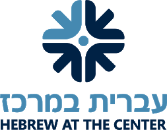Consistency in Class Placement: Forming Hebrew and Judaic Studies Classes that Support our Mission and Improve Results
September 14, 2017 by
At MILTON, we foster joyful and dynamic classroom communities through intentionally-created learning environments. Our approach reflects our vision of each child as a whole and unique individual and our commitment to a culture of inclusivity. We consider a variety of criteria – including social dynamics, gender balance, relationships among students, and best fit between the students’ learning styles and the faculty members’ teaching styles – when determining the placement of students in classrooms. Our experiences as administrators and as educators, along with research in the field of education, tell us that purposeful, balanced, and thoughtfully inclusive classrooms are more successful.
In past years, we considered myriad factors when determining placement in General Studies classes, but relied solely on students’ Hebrew level to determine placement in both the Hebrew and Judaic Studies classes. In the last two years, we devoted significant attention to an examination of the alignment between our philosophy and educational approach, and students’ placement in their Hebrew and Judaic Studies classes (placement for Hebrew and Judaic Studies begins in 3rd Grade). As a result, in addition to considering students’ Hebrew language level, we moved to taking other factors into account. First, we tailored our approach to placement by adjusting the make-up of the classroom communities. Our classes are now designed with more purpose in terms of composition. In addition to academic factors, we included social dynamics and faculty teaching styles among our considerations. Second, we identified separate considerations in determining placement for Hebrew and Judaic Studies. In some cases, students are with the same group of students for Hebrew and Judaic Studies, and in some cases, it was appropriate to create different groupings. Third, to be more effective, we consolidated our classrooms and redistributed our resources. In years past, we typically had four groups of Hebrew and Judaic Studies classes per grade; these encompassed three average size classes and one very small class. This year, we have three classes that contain slightly larger groups. Rather than teaching a separate class, we have a second teacher in some classrooms to provide students with sustained academic support.
Many factors were taken into account in the evolution of the ways we apply placement criteria. We innovated our practice based on feedback from faculty and parents. We utilized the latest academic research. We piloted this approach in Third Grade last year – to great success – and applied what we learned more broadly this year. Throughout this process, our team of administrators, teachers, and student support professionals considered ways to best meet each student’s needs as individual learners and complex human beings. We looked at ways to shape learning environments in support of high academic expectations for all students, wherever they are in their learning. Just as important, this approach reflects our mission as a school, and our commitment to fostering a vibrant, collaborative, caring, and inclusive school community.
Reflection and a commitment to best practices is also part of our ethos at MILTON. We will be evaluating the merits of this approach over the course of the school year; we will also continue to measure progress in our students’ Hebrew language skills. For the last three years, MILTON has worked with AVANT Assessment to gather data that measures student achievement in Hebrew language acquisition. At the end of the school year, students take an adaptive web-based test that measures Reading, Writing, Listening, and Speaking skills in both Interpretive and Presentational modes of communication. AVANT testing is based on national standards that assesses students’ second language proficiency according to benchmarks based on the ACTFL (American Council on the Teaching of Foreign Languages) Proficiency Guidelines at the Novice, Intermediate, and Advanced levels.
To learn more about AVANT testing, we invite you to join us on October 16. AVANT VP of Education and Assessment Kyle Ennis will come to MILTON for a daytime workshop with teachers and an evening presentation for parents. The discussion will focus on providing faculty and parents with a framework to interpret the information we can glean from the AVANT testing to inform the teaching and learning, as well as to offer a better understanding of the proficiency approach in developing effective second language programs. We will share times for the parent information session shortly.
Thank you for your partnership as we continue to strengthen our program. We know we serve our students best when we include students, teachers, parents, learning specialists, administrators, and outside experts in the field in reflecting on our practice and in constantly elevating our practice.






